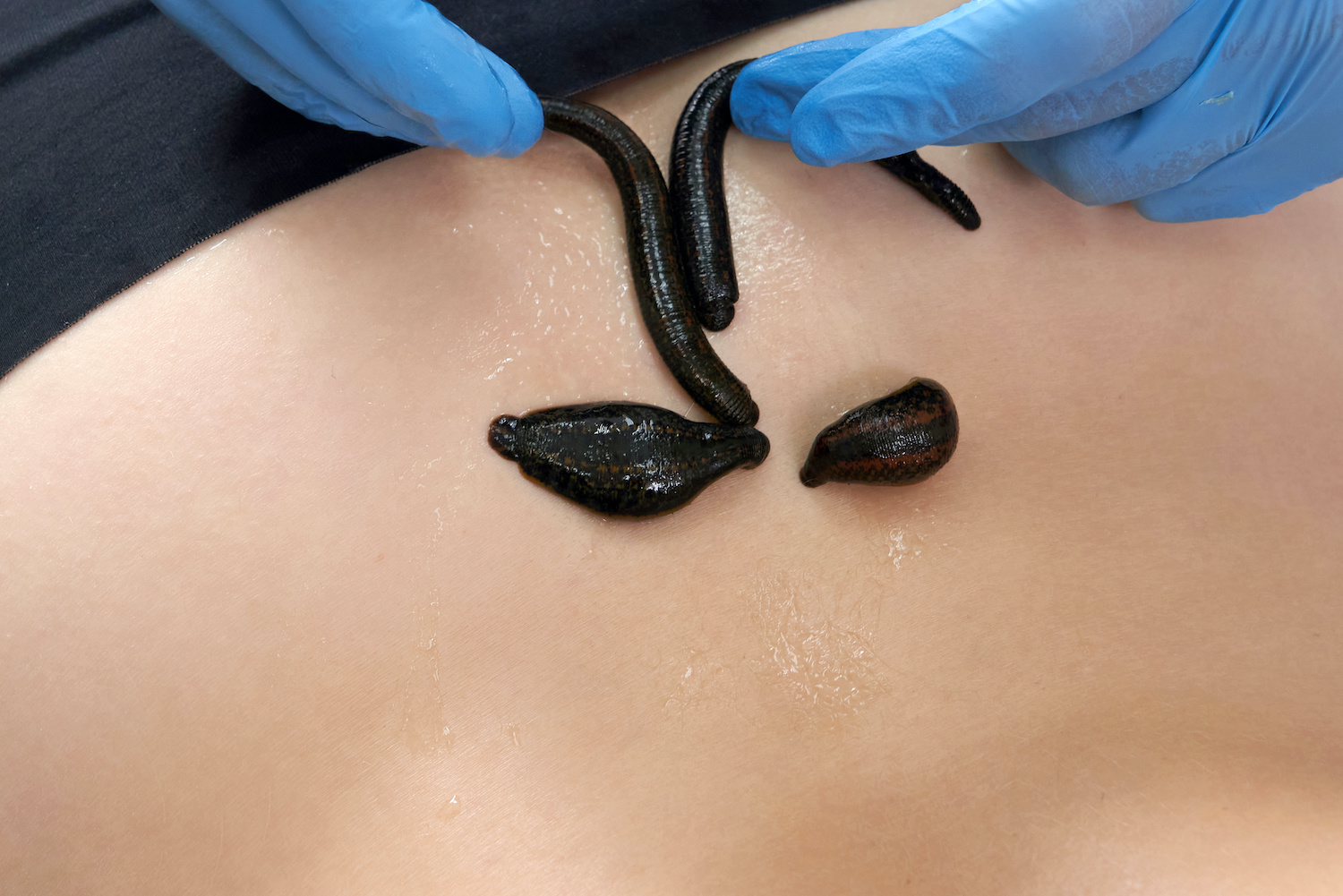Sinus diseases are a common health problem that affects people at any time of the year. They hinder breathing, cause headaches, limit the ability to function normally, and significantly reduce the quality of life. Faced with the challenge of treating diseased sinuses, more and more people are looking for alternative and natural treatment methods that could provide relief and speed up recovery. One of the unconventional therapy forms that has gained popularity in recent years is leech therapy. Leeches for diseased sinuses – what does leech therapy look like in the case of sinuses? Check it out!
Structure of sinuses
Sinuses are air-filled cavities (empty spaces) inside the skull and facial bones. The structures of the facial skeleton define their shape. The interior of the sinuses is lined with pink mucous membranes. Besides, they are filled with air and a small amount of secretion. Sinuses perform essential functions, including helping to moisten and warm the air we breathe.
There are four main groups of sinuses located on both sides of the nose and in the areas around the forehead and jaw:
- frontal sinuses;
- ethmoid sinuses;
- sphenoid sinuses;
- maxillary sinuses.
Functions of sinuses
Sinuses perform a series of essential bodily functions, both in terms of physiology and respiratory system protection. Here are the most important ones:
- Warming and moistening the air during breathing – this ensures that moist, warm air reaches the respiratory tract, which may reduce irritation of the nasal and bronchial mucous membranes;
- Reducing pressure in the nasal cavity – sinuses act as additional spaces that expand the nasal cavity, reducing internal pressure. This positively affects the ability to breathe freely through the nose;
- Draining secretion – The mucous membrane lining the interior of the sinuses produces secretions designed to protect and moisten the mucous membrane and nasal passages. This secretion is drained from the sinuses to the nasal cavity through draining ducts;
- Protection against injuries – thanks to their structure, sinuses serve a protective function in the event of head injuries. They act as a kind of buffer, reducing the effects of potential impacts;
- Reducing the weight of the skull – air-filled sinuses, especially the frontal sinuses, help reduce the weight of the skull, facilitating balance maintenance and reducing the strain on brain structures.
What is sinusitis?
Sinusitis is an inflammatory condition of the mucous membrane lining the interior of the sinuses. When the sinus mucous membrane becomes irritated or infected, it can swell and increase mucus production, leading to the blockage of draining ducts. As a result, secretion accumulates inside the sinuses, unable to naturally flow into the nasal cavity.
The blockage of ducts and accumulation of secretion create a perfect environment for the development of bacteria or viruses, causing an intensification of the inflammatory process. Consequently, a sinusitis patient experiences many unpleasant symptoms, such as a blocked nose or facial pain.
Causes of sinusitis
The most common causes of acute sinusitis are viruses, such as rhinoviruses, influenza viruses, or coronaviruses. Sometimes, acute sinusitis is caused by bacteria (e.g., Streptococcus pneumoniae). Bacterial sinusitis can also occur as a complication after a viral infection. People suffering from allergies, especially allergic rhinitis, may have a higher risk of developing sinusitis.
Among the possible causes of chronic sinusitis are:
- unresolved or poorly treated inflammation;
- presence of sinus polyps;
- the atypical anatomical structure of the sinuses;
- environmental factors;
- immune system diseases.
Did you know that a decrease in immunity related to a low level of vitamin D3 in the body can cause chronic sinusitis? To ensure an adequate supply, it’s worth using appropriate supplementation. Vitamin D3 dietary supplements can help replenish the reserves of this substance and avoid deficiencies. Vitamin D3K2MK7, a combination of vitamin D3 with K2, is also a good choice – the first increases calcium absorption from the gastrointestinal tract, and the second directs it to bone tissue, strengthening the bone structure. Also, check out other vitamins and minerals for immunity.
Symptoms of sinusitis
In the course of sinusitis, symptoms such as:
- nasal obstruction;
- nasal discharge (postnasal drip);
- facial pain or a feeling of fullness;
- impaired or loss of smell.
The presence of sinusitis is indicated by the occurrence of at least two of the above symptoms, with one of them being nasal obstruction or nasal discharge.
How to cure sinuses?
In the initial phase of sinusitis, over-the-counter symptomatic drugs and nasal irrigation with 0.9% NaCl solution are used. Pharmacological treatment includes taking paracetamol or
NSAIDs, vasoconstrictor drugs for the nasal mucous membrane, zinc preparations, or combination drugs containing an antihistamine, a nasal mucous membrane vasoconstrictor, and paracetamol or NSAIDs.
Antibiotics are administered for bacterial sinusitis. Treatment of chronic sinusitis includes helping glucocorticosteroids and biological treatment. A functional endoscopic sinus surgery is performed if such treatment does not improve.
Home remedies for diseased sinuses
Commonly available methods to alleviate symptoms associated with sinusitis include:
- nasal irrigation with saline solution;
- hot compresses;
- steaming;
- increased hydration;
- avoiding irritants;
- using air humidifiers;
- sleeping with a slightly elevated head.
Leech therapy for sinuses
For chronic or recurring sinusitis, leech therapy may be helpful. These small, unassuming creatures produce over 100 therapeutic compounds that, once they enter the bloodstream, positively impact health. They act as anti-inflammatories and reduce swelling; in case of bacterial infection, they have antibiotic-like effects. Hirudo compounds have many actions, so leeches for sinuses often bring significant health improvements.
Where to place leeches for sinuses? Leech application should be performed by an experienced leech therapist with the proper knowledge regarding the correct course of the procedure. Typically, leeches are applied in the problematic area, in this case, the forehead and around the nose. The treatment lasts until the leeches detach and fall off, which is about 1 hour.

